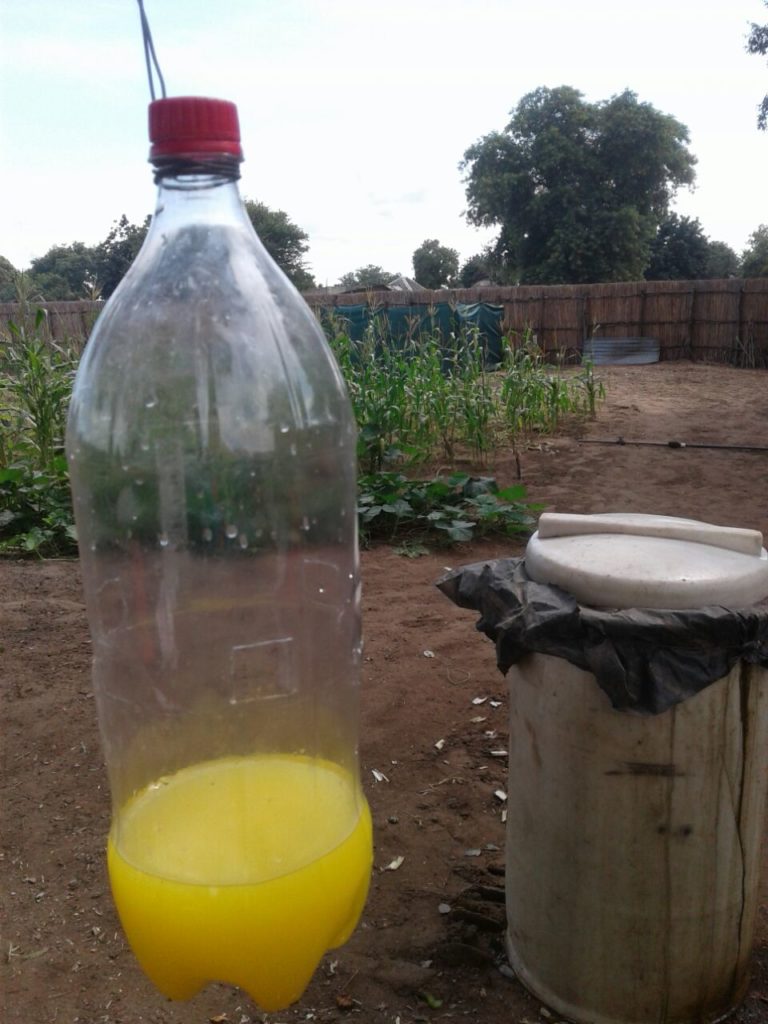Repellent plants, traps and natural enemies handling for crop pest management
Repellent and/or insecticidal plants, traps, and natural enemies handling are some very easy and efficient ways to control important crop pests, especially for smallholders and family farmers.
It is known that a large number of plants naturally exhibit repellent and/or insecticidal activities. This natural botanical activity has led to the characterization of these plants as “phytoinsecticides“. Taking advantage of the intrinsic phytoinsecticidal potential of this biological tool, it can be introduced, whenever possible, on farms as an alternative means of supporting crop pest management.
The repellent and/or insecticidal plants can be planted on the borders of the main crops, in an intercropping, or distributed freely among the crop plants.
Among the different plant species having this ability-characteristic, the following ones stand out:
- Mammea americana
Aids in the control of caterpillars Diaphania spp, Spodoptera frugiperda, and the insect Plutella xylostella;
- Ruta graveolens and Allamanda nobilis
Aids in aphid control;
- Mentha piperita and Tanacetum vulgare
Acts as an ant repellent;
- Calendola officinalis
General insect control;
- Coriandrum sativum
Mite and aphid control;
- Sapindus sapona
Helps control stored grain pests;
- Urtica Urens
Control of aphids and repellent to the bug Phthia picta;
- Delphinium sp.
Locust repellent;
- Cymbopogon winterianus
Housefly repellent;
- Rosmarinus officinali and Pelargonium graveolens
Repels pests and insects;
- Cymbopogon citratus
Cabbage aphid repelling aid Brevicoryne brassicae;
- Tagetes erecta
Repels whiteflies and fights nematodes;
We recommend that farmers plant as many of these plants as possible throughout the property in order to find the optimum combination and have the best results.

Tomato plants with coriander to assistant combat tomato moth and whitefly
“Agroecological traps to capture biological agents identified as pests.”
One way to combat the pests that fly is to use a simple trap that contains a solution attractive to the insect. Widely used in commercial crops but little known to small and medium farmers.
The trap is very cheap to make it. All you need is to build a disposable pet bottle for each trap.
A caching solution is placed inside the translucent white pet bottle, capable of attracting the insect into the bottle and leading to its drowning in the solution. The attractive solution should be sweetened, such as by example, a natural fruit juice, and should preferably be yellow. (Dilute one part of pulp to four equal parts of water).

Assembly
Step 1: Drill four holes with one centimeter of radius at 90 degrees from each other, just above the middle of the pet bottle. All should be on the same line as the outer perimeter of the bottle.
The holes drilled in the pet bottle will serve as an entry point for the insects. You should open a maximum of 4 holes at 90 degrees to prevent the insects from escaping the trap.
Step 2: Remove labels and clean the outer surface of the pet bottle to keep it completely transparent and prevent the trap from becoming less attractive to the insect.
Step 3: Depending on the size of the area, place two to four traps per hectare.
Hung the trap on a branch that is more peripheral and less exposed to the sun, just above the middle of the fruit trees.
In the case of shrub crops, it will be necessary to use slanted stakes (20 to 45 degrees vertically) so that the pet bottom surface of the bottle is a few centimeters above the top of the tallest leaves.
It is also suggested to place a trap close to and just above each compost pile, biofertilizer, and biopesticide tank.
The attractive solution must be renewed and refreshed by the same or a different attractive solution immediately when you realize that the insects are no longer attracted to the solution or when the trap is cleaned to remove the captured insects.
Every week or at most every fortnight, when discarding the dead insects, you should change the liquid in the pet bottles. Rinse the container with water to remove the residue from the old attractive solution before placing the new one. Traps should be replaced every four months and taken to garbage recycling sites.
“Fruit fly trap”
Fruit flies (Anastrepha fraterculus and Ceratitis capitata) are also known as “fruit bugs” or “guava bugs.”
These insects cause direct and indirect damage to the fruits and, thus, reduce their commercial value.
To help solve the problem, you can use a trap that allows the multiplication of a wasp species (Canaspi Carvalho) that is a natural enemy of the fruit fly.
Material needed:
Plastic mosquito net screen with mesh 2 mm;
Hoes and shovels for trenching.
How to assemble the attractive trap:
Step 1: Ditching: Dig a small trench 30 cm deep x 30 cm wide x 30 cm long;
Step 2: Preparing the screen: Cut pieces of screen 35 cm wide x 35 cm long;
Step 3: Wasp attraction: Place the first fruits of the crop in the ditch;
Step 4: Covering the ditches with the screen: Cover the trench with the screen, taking care to place soil about 5 cm from all sides of the screen so that it is well fixed to the ground and does not allow the entry of animals and/or the escape of the larvae.
How it works:
The fly larvae inside the fruits placed in the trench will turn into adults. From there, the tiny wasp will pass through the 2mm opening in the screen and lay its eggs on the fruit fly adults that remain in the trap. The wasp reproduces on the fruit fly adults quickly and will leave the screen, multiply more and more, performing a natural pest management.









































































